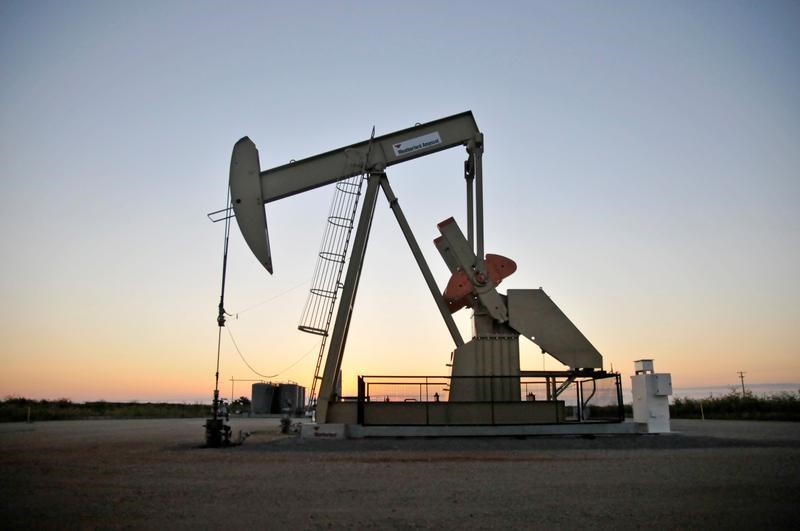By Henning Gloystein
SINGAPORE (Reuters) - Oil prices fell on Friday, dropping away from highs last seen in 2015, as soaring U.S. production undermined a 10-percent rally from lows hit in December that was driven by tightening supply and political tensions in OPEC member Iran.
U.S. West Texas Intermediate (WTI) crude futures (CLc1) were at $61.81 a barrel at 0750 GMT. That was 20 cents, or 0.3 percent, below their last close. WTI hit a $62.21 the previous day, which was its strongest since May, 2015.
Brent crude futures (LCOc1) were at $67.88 a barrel, 19 cents, or 0.3 percent, below their last settlement. Brent hit $68.27 the day before, also the highest since May, 2015.
Traders said political tensions in Iran, the third-largest producer in the Organization of the Petroleum Exporting Countries (OPEC), had pushed prices higher.
"The protests in Iran add more fuel to the already bullish oil market mood," said Norbert Ruecker, head of commodity research at Swiss bank Julius Baer.
Oil prices have received general support from production cuts led by OPEC and by Russia, which started in January last year and are set to last through 2018, as well as from strong economic growth and financial markets. [MKTS/GLOB]
That has helped tighten markets. U.S. commercial crude inventories
That is down 20 percent from their historic peaks last March and close to the five-year average of 420 million barrels.
CAN THE BULL-RUN LAST?
Yet given Iran's oil production has not been affected by the unrest, and that U.S. output
U.S. bank Jefferies said the oil price "upside from here is not obvious to us", although it added that "we believe the oil market will remain undersupplied through 2018".
Ruecker of Julius Baer said crude prices above $60 per barrel project an "overly rosy picture (as) oil production disruptions (in Iran) remain a very distant threat ... disruptions in the North Sea have been removed ... (and) U.S. oil production surpassed the 2015 highs in October and is set to climb to historic highs this year."
Lukman Otunuga, analyst at futures brokerage FXTM, struck a similarly cautious tone.
"Oil started the New Year on an incredibly bullish note ... in part due to ongoing tensions in Iran ... (and) over OPEC's supply cut rebalancing the markets," he said.

"While the current momentum suggests that further upside is on the cards, it must be kept in mind that U.S. shale remains a threat to higher oil prices."